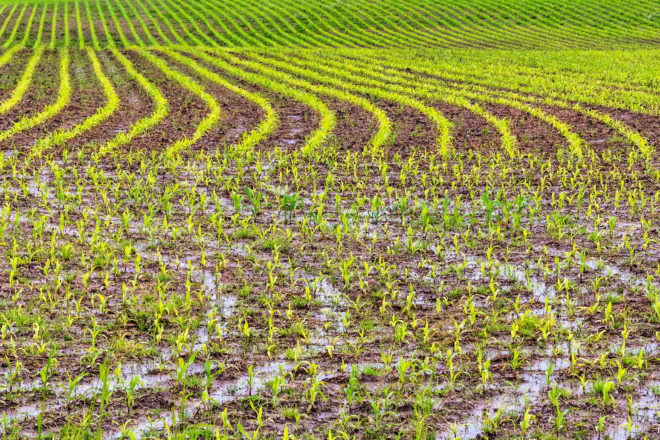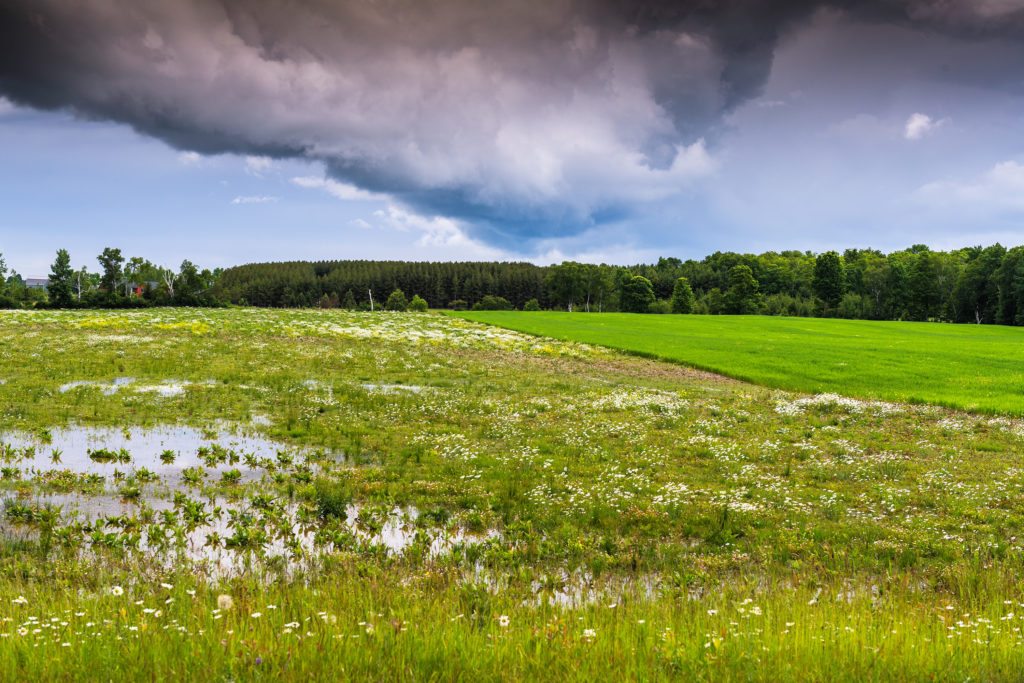June’s Record Rain Tough on Cherries, Farmers
- Share
- Tweet
- Pin
- Share

Door County’s fruit growers are watching the forecast with a nervous eye after orchards were drenched with record rainfall in June.
“Cherry trees don’t like to be wet,” said Jim Seaquist of Seaquist Orchards. “Another week or two of rain and we could see some really devastating impacts.”
Heavy rain creates conditions ripe for infections and fungus growth, according to Matt Stasiak of the Peninsular Agricultural Research Station. Door County recorded 9.57 inches of rain in June, with more on the way. That’s more than twice the average of 3.49 inches, and nearly an inch more than the all-time June record of 8.26 inches set in 1990.
Door County recorded 2.97 inches of rain in May, slightly below the mean rainfall of 3.06 inches, according to the National Oceanic and Atmospheric Administration.
“Every rainfall can cause an infection period for fruit crops,” Stasiak said. “Normally we’ll have about 10 infection periods between May and September. This year we’ve already had 13.”
The two infections he’s watching most closely are apple scab and cherry leaf spot. Apple scab can show up on the fruit itself, making it difficult to sell and to store, as the fruit will rot more quickly.
Cherry leaf spot can cause trees to defoliate earlier, which is rough on the trees come winter. It can also impact the fruit’s ability to create sugar, affecting the size of the fruit and its ability to ripen.
“If we lose the leaves, the trees die,” Seaquist said. “We need to protect those leaves by spraying for fungus, but it’s challenging with all the rain and wind here.”

Extremely wet conditions can cause root rot in crops of all types, as the plants struggle to take in oxygen and nitrogen.
“Essentially the roots shut down,” Stasiak said.
Annie Deutsch, agricultural agent at the Door County University of Wisconsin – Extension office, said she’s heard reports of root rot in other regions of the state but not yet in Door County.
The trouble extends beyond infection for farmers throughout the peninsula. Standing water is common in saturated fields, making it difficult for farmers to harvest crops, spread fertilizer, and spray pesticides.
“With as wet as it is, we’re having trouble just getting through to parts of our orchards,” Seaquist said. “On Friday we brought an excavator in to get a piece of equipment out of the mud, and Tuesday we had two pieces of equipment stuck.”
Seaquist said the crop will still be in good shape if the current forecast, which calls for drier conditions, holds up.
“We’re looking at about 60 to 65 percent of last year’s crop, which will bring plenty of cherries to go around,” he said.
With another inch of rain forecast for June 28, Seaquist hoped for a quick return to normal weather in July.
“But I don’t even know what normal is anymore,” he said. “There’s a whole different set of problems each year. When we have our morning meeting, we don’t have to wonder ‘what are we gonna do today?’”
Door County’s June Drenching
June 2017 Rainfall: 9.57 inches
June Average: 3.49 inches
June’s Previous All-time High: 8.26 inches (1990)
June’s All-time Low: .61 inches (1988)
Editor’s Note: An earlier version of this article incorrectly identified the previous all-time record for June rainfall as 10.59 inches in 1990, and the all-time low as .31 inches in 1976.

